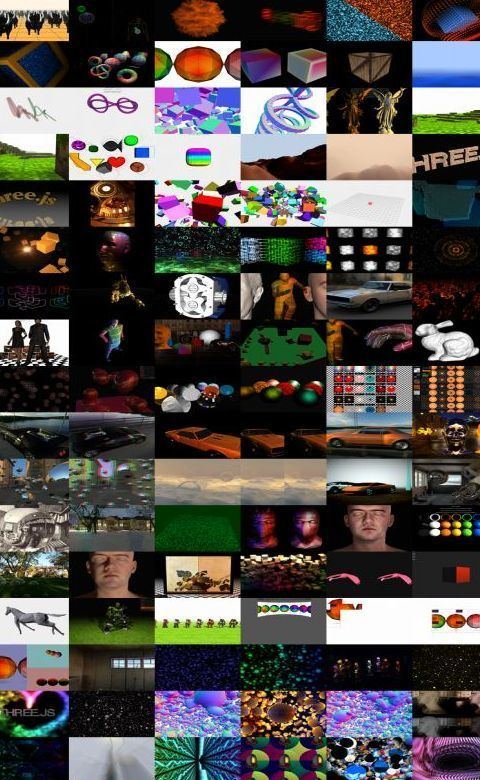Developer(s) Three.js Authors | Development status Active | |
 | ||
Original author(s) Initial release April 24, 2010 (2010-04-24) Stable release r83 / December 15, 2016 (2016-12-15) | ||
Three.js is a cross-browser JavaScript library/API used to create and display animated 3D computer graphics in a web browser. Three.js uses WebGL. The source code is hosted in a repository on GitHub.
Contents
Overview
Three.js allows the creation of GPU-accelerated 3D animations using the JavaScript language as part of a website without relying on proprietary browser plugins. This is possible thanks to the advent of WebGL.
High-level libraries such as Three.js or GLGE, SceneJS, PhiloGL or a number of other libraries make it possible to author complex 3D computer animations that display in the browser without the effort required for a traditional standalone application or a plugin.
History
Three.js was first released by Ricardo Cabello to GitHub in April 2010. The origins of the library can be traced back to his involvement with the demoscene in the early 2000s. The code was first developed in ActionScript, then in 2009 ported to JavaScript. In Cabello's mind, the two strong points for the transfer to JavaScript were not having to compile the code before each run and platform independence. With the advent of WebGL, Paul Brunt was able to add the renderer for this quite easily as Three.js was designed with the rendering code as a module rather than in the core itself. Cabello's contributions include API design, CanvasRenderer, SVGRenderer and being responsible for merging the commits by the various contributors into the project.
The second contributor in terms of commits, Branislav Ulicny started with Three.js in 2010 after having posted a number of WebGL demos on his own site. He wanted WebGL renderer capabilities in Three.js to exceed those of CanvasRenderer or SVGRenderer. His major contributions generally involve materials, shaders and post-processing.
Soon after the introduction of WebGL 1.0 on Firefox 4 in March 2011, Joshua Koo came on board. He built his first Three.js demo for 3D text in September 2011. His contributions frequently relate to geometry generation.
There are over 650 contributors in total.
Features
Three.js includes the following features:
Three.js runs in all browsers supported by WebGL 1.0.
Three.js is made available under the MIT license.
Usage
The Three.js library is a single JavaScript file. It can be included within a web page by linking to a local or remote copy.
The following code creates a scene, adds a camera and a cube to the scene, creates a WebGL renderer and adds its viewport in the document.body element. Once loaded, the cube rotates about its X- and Y-axis.
Selected Uses and Works
The Three.js library is being used for a wide variety of applications and purposes. The following lists identify selected uses and works.
Mixed Media
Model Visualization and Scene Creation Applications
Game and Simulation Authoring Tools
Games
Education
Community
Online IDEs with built-in support for Three.js are available at WebGL Playground, HTML Snippet and jsFiddle. Documentation is available for the API as well as general advice on the Wiki. Support for developers committing to the library is provided via the Issues forum on GitHub, while support for developers building apps and web pages is provided via StackOverflow. Real-time on-line support is provided using IRC via Freenode. Most of the developers are also on Twitter.
